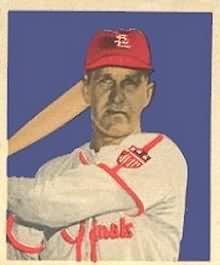We’re moved to pose this question after listening to the almost
60-year-old taped radio broadcasts of then-roving crime reporter
Marvin Zindler posted by the
Chronicle’s “Bayou City History” blogger, J.R. Gonzales (this stuff is absolutely fascinating, by the way). Gonzales and several of his commentators noted the datedness of the soft, deeply Southern drawls of the crime victims (and perpetrators) in whose faces Zindler stuck his roving microphone. The kind of accent that you don’t hear that often these days, unless its from the mouth of a really, really old person. One “jb” wrote in response to the Zindler tapes
On the accents, Houston was a lot more Southern in character back then. Today you're hard-pressed to even find a native Houstonian among the mass of transplants who comprise the majority of the city's populace. Definitely a different era ...
Commentator “Don” added:
Love the accents. You still hear that out in Montgomery County, but even out here the transplants are wiping it out now. Another thing wiping out the beautiful, soft, distinctive Houston accent is pop-culture. Kids are raised on such a large volume of TV that the kids all sound the same from coast to coast.
Having been raised in deep south Texas farm country, our accent is very similar to that of the Houstonians on the tapes, but it is disappearing. Just listening to these people talk makes me dearly miss my grandparents, who had that gentle, soft cadence to their voices.
But is/was that really a distinctive
Houston accent? (This isn’t a rhetorical question-- we’re curious.) What we mean is, were the pronunciations, inflections and cadences peculiar to Houston, in a way that if you were in New York or Boston and heard them you could ask the speaker “You’re from Houston, right?” and be assured of an affirmative answer, as opposed to the broader and more obvious “You’re from Texas, right?” or the even broader and more obvious “You’re from the South ...?” The way we can always immediately peg a native New Orleanian, white or black, even the ones with Ivy League educations like the writers Walter Isaacson or Nick Lemann. The way Ted Kennedy’s
“Mannah of Speaking,” as the
Times put it last weekend, marked him as the quintessential Boston-Irish pol (albiet one with prep school and Harvard educations).
We’ve never been able to hear a distinct “Houston” accent because there apparently isn’t one: The speakers on these tapes, and the old-timers we run across now and then with obvious rural roots (fewer and fewer as the years go), sound Southern in a generic sense, as if they could just as well be from Georgia, Tennessee, Virginia or South Carolina, the states origin of most of the distant forebears of our East Texas grandparents’ generation. Houston and the rest of East Texas are generally grouped under the sub-regional “Gulf” or
“Gulf Southern” variant of
“Southern American English,” which as far as we can tell really doesn’t have much to distinguish it from the other
Southern sub-groupings (save, obviously, for Cajun French/English and New Orleans’ German/Irish inflected port accent, often described as “Brooklynese” [how come Brooklyn accents aren’t described as “New Olreanese”?]). So, if there is a “Houston accent,” it’s really more of an “East Texas accent,” maybe dressed up a little for the big city with the correct pronunciation of “bayou” thrown in as lagniappe. (It’s interesting on the Zindler tapes how the black and white voices--and Houston was pretty much a black-and-white town back then, with a touch of brown--are immediately identifiable by race but quickly blur together, another indication of how close in station the redneck and the descendent of slaves, the people who built this town out of the mire, used to be. The one really distinctive accent we hear on the tapes belongs to the interviewee who was involved in the "domestic dispute, 1900 block of Bell" and as Zindler reported was "bleeding from the back of his head" after being whapped with a shoe by his wife during an argument over whether to send their 6-year-old daughter--whom the woman weirdly refers to as "it"--away to a children's home. The man sounds Tex-Mexican--he tells Zindler he's been in an "arga-ment" with his wife--but it's hard to tell if his shoe-wielding assailant is Mexican-American, PWT or a combination thereof. (Such incidents of petty social disorder, by the way, were one reason the middle class was primed to move to the suburbs about this time; did we mention that this stuff is fascinating on several different levels?)
Still, we’ve strained to detect something unique in the way people talk around here. Many years ago we found our self at a large gathering of people from the North Shore in east Harris County and thought we heard something distinct, maybe a a seam or underlay of something like New Orleanese, which would make sense given the proximity of the port. Then again, we had had a few beers at the time. There’s definitely a “Tex-Mex” variant of Southern American English, as spoken by Mexican-American native speakers of English and distinguished by, among other characteristics, the swallowing-up of the “ing” in verb participles and gerunds (“go-an” for “going,” for example). There may even be a “Hou-Mex” sub-variant, or perhaps there’s one a’bornin’ here as we sleep. Sometimes we’ve thought we’ve even picked up on a “Jew-Tex” accent, which we couldn’t begin to describe.
Whatever the case, the Southern accent that Gonzalez’s posters eulogize is going the way of all regional dialects and accents, although it still abides in a somewhat denatured form and will survive, for a while, because of the enduring assimilative properties of Southern American English. We always get a kick out of meeting some middle-aged or older Chinese-American lady who grew up in Houston or somewhere in the South and speaks in the same slow, “gracious” manner as our mother. Perhaps the most oft-heard Southern speaker in the city is our mayor, who grew up in San Antonio and whose painstakingly deliberate and wending style masks a quick and calculating mind. (It also allows him to get away with making cutting and dismissive remarks, then turn around and deny that he meant what he obviously meant--a talent we personally admire, but we have no political skills whatsoever.)
The most interesting voice on the Zindler tapes belongs to Marvin himself, especially the studied, deep-throated and correctly enunciated “announcer” voice he affects in the opening segment of these broadcasts (which, right down to the swelling music, seems to have been modeled on the intro to the old Superman radio/TV serials). It’s clear that while Marvin never attended J-school he might have taken a home-study course in "How To Talk Like a Radio Announcer" in a vain effort to shed his East Texas way of talkin'--here his is the voice of a thousand Ted Baxters and faux-Cronkites to come. (Like the blown-dry male reporter for Channel 11 or 13, we can’t remember, who a few days ago pronounced the name of the Aggie mascot as “re-VEL,” and apparently still has his job.) During the heat of his on-the-scene reporting, though, Zindler slips more comfortably into a restrained version of what would become his signature Jew-Tex/cracker style of speaking, or bellowing. After one hillbilly-singer cop tells Marvin he hasn't been able to determine whether that poor gal laid out in the 1700 block of Sawyer is dead or just passed out from imbibing too much "intoxicatin' liquor,"* Marvin, reporting live from the foyer at Jeff Davis Hospital, pronounces it "intoxicating liquor," something he'd never do 30 years later, after he'd fully let his wig down. (Did we mention that these tapes are not only fascinatin' but downright intoxicatin'?)
*Turns out she was dead, but, as the admissions clerk at the hospital informs Marvin, was known to have had an "alky-hall problem."
 On Sunday the Times Book Review favorably eyeballed David Byrne’s Bicycle Diaries, a book composed of journal entires the ex-Talking Head and cha-cha enthusiast made while touring various metropolises of the globe with his musical combo. A dedicated bicyclist in his hometown of NYC, Byrne totes a foldable bike on tour so he can get out and about and take in the local sight-age. As the Times reviewer put it, the book is “partly about cycling but also about whatever Byrne happens to have on his mind at the time.”
On Sunday the Times Book Review favorably eyeballed David Byrne’s Bicycle Diaries, a book composed of journal entires the ex-Talking Head and cha-cha enthusiast made while touring various metropolises of the globe with his musical combo. A dedicated bicyclist in his hometown of NYC, Byrne totes a foldable bike on tour so he can get out and about and take in the local sight-age. As the Times reviewer put it, the book is “partly about cycling but also about whatever Byrne happens to have on his mind at the time.”



